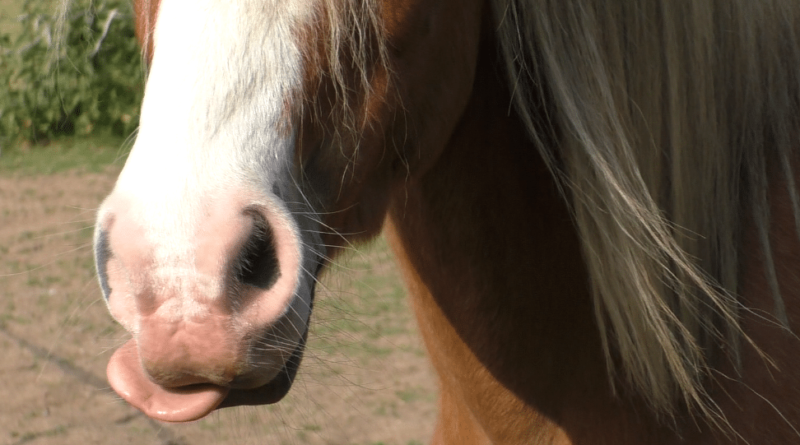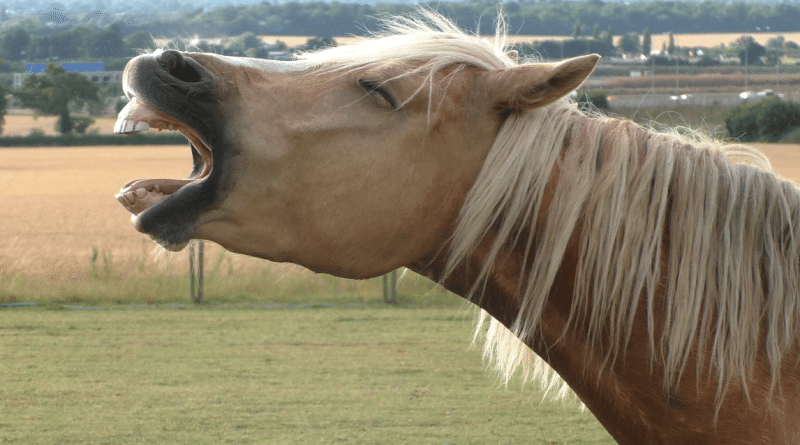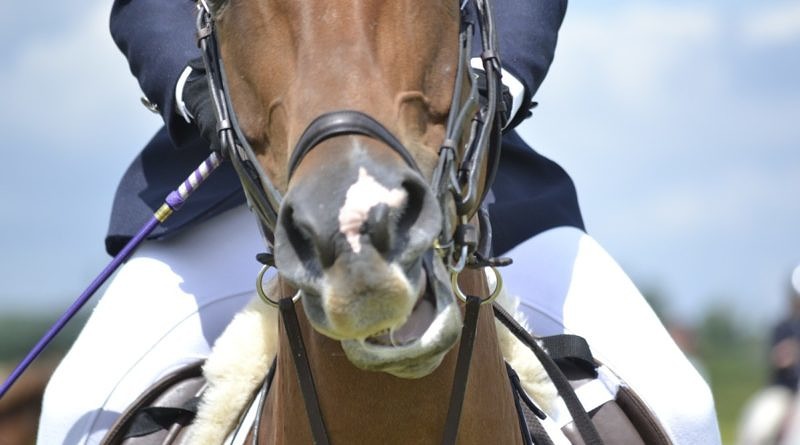Licking & Chewing
Are licking and chewing really signs of learning? In other animals licking and chewing can be signs of stress – are horses different?
Most horse owners or enthusiasts will have encountered the behaviour of “licking and chewing”. Most likely this will have been in the context of some method of training and it is specifically the licking and chewing that occurs just after or during a training session that this article is concerned with. Of course horses lick and chew in many other contexts also!

A widely held belief is that this type of behaviour, along with other jaw movements, represents the “aha!” moment in learning. You may have heard that when you see a horse licking its lips during a training session, you can be assured that it has learned something new and will do better next time.
The question is, why would a horse begin to lick and chew when it has learned something? What is the connection between learning and these actions? Does this really make sense?
You may have seen it suggested that licking and chewing indicate the moment when the horse is “digesting thoughts”. But this is just an appealing metaphor – presumably we do not believe this literally! Horses must lick and chew during training for some other reason.
So why in fact do horses display licking and chewing behaviour? And does it even mean what is often assumed?
Horses are Mammals!
Animals actually share a great deal of behavioural tendencies across the board. Even creatures as divergent as stickleback fish and humans have certain behaviours in common – sometimes even surprisingly complex cognitive abilities are present in animals we normally think of as simple and unintelligent.
Therefore the first question to ask of a behaviour such as licking and chewing is: does it occur in other species? At the very least: do we observe licking and chewing in other mammals? Now the obvious answer is of course! Animals lick and chew when they are feeding.
The popular idea that licking and chewing is due to the horse registering a concept – and the metaphorical “digestion of thoughts” – originates from a general appreciation that licking and chewing, of course, accompanies feeding.
However, when as equestrians we discuss this behaviour, we’re not talking about feeding time.
Dogs Lick & Chew
Dogs are a very familiar and widely studied domestic animal so they are a good place to look for less well-researched behaviour that is present in horses. As social animals, both dogs and horses need to be able to communicate their emotions to their pack and herdmates. The signals they use are ones we humans can also learn to read in order to better understand what the animals we spend our time with are thinking and feeling.
Licking behaviour in dogs comes in many forms. Everyone will be familiar with the dog that lovingly slobbers all over its owner’s face, And some will have heard that a subordinate dog will lick the alpha’s muzzle and mouth. These are not equivalent behaviours to those seen in horses. But dogs do show one similar licking behaviour and understanding it reveals a lot.
Stress Response
Licking and chewing of the kind observed by equestrians does occur in dogs. In both species, the animal will lick its lips quickly and repetitively, occasionally seeming to chew or swallow. The behaviour will often follow the handler attempting to elicit a particular response from the animal.
These behaviours are a clear sign of stress. They often follow a particularly stressful event (such as being chased around a roundpen) and are produced when the animal is coming out of a heightened flight state into a more relaxed one.
To understand this behaviour, consider the expression “I caught my breath” as applied to something frightening. In a moment of fear, your body will divert resources to engaging in a flight response and in this time much of your usual functioning will cease. Of course, you won’t literally stop breathing! But you may well stop salivating, swallowing, chewing etc.
This is something you can very clearly see in a horse that has been frightened with a mint in its mouth. Wait until the source of concern is gone and that horse will happily resume crunching. Licking and chewing are no different and represent the moments following an acutely stressful event when a horse begins to resume normal function. It is the “phew!” moment… Not the “aha!” moment.
Sighs and deliberate yawns may further punctuate the behaviour – again, in both dogs and horses.
Reading Signals
Most people will have a cursory awareness of both dog and horse body language and signalling behaviours. People will tell you that a tail tucked between the legs is a sign of fear or submission in a dog, that ears flat back signify anger in a horse, and that the whites of the eyes showing could indicate pain or fear. However, humans are actually pretty poor interpreters of horse body language and also miss the subtler cues dogs produce.
Dogs have lived alongside humans for much longer than horses and have evolved obvious signals especially intended for us. Studies show humans with little or no dog experience can still instinctively tell if a dog’s bark is signalling pain, excitement or aggression, for instance.
Sadly this is not the case for horses: even experienced horsemen and women cannot judge mental state accurately. To learn to read horses correctly is not simply a matter of experience but also careful intellectual study – because most of a horse’s signals are simply not tuned for a human to pick up. They are intended for other horses and are not intuitive for us.
Further complication arises from the fact that a stressful training method will still work. This does produce results: much of traditional horse training, and modern systems that use the same or similar methods (natural horsemanship, for example), are based on the relieving of stress as a method of reinforcement. This is not necessarily a bad thing – negative reinforcement is one of the ways animals learn. However, if you set out to train in a way that limits stress and then take a stress response to be a sign that you succeeded, you went terribly wrong somewhere along the way!
It is telling, therefore, that years of folk wisdom have apparently completely misinterpreted the meaning of the “lick and chew”, now such a prevalent concept in the world of natural horsemanship. In fact, a horse licking and chewing has just experienced something stressful. It may well have learned something from this stressful experience – but there were also probably less stressful ways to get the same point across.
If you really want to teach your horse something in a stress-free way, you need to watch out for licking and chewing following your lesson. If you see your horse engaging in this behaviour, your horse is very clearly telling you that it found your methods stressful.








Pingback: Why Does My Horse Lick Me? 7 Likely Reasons